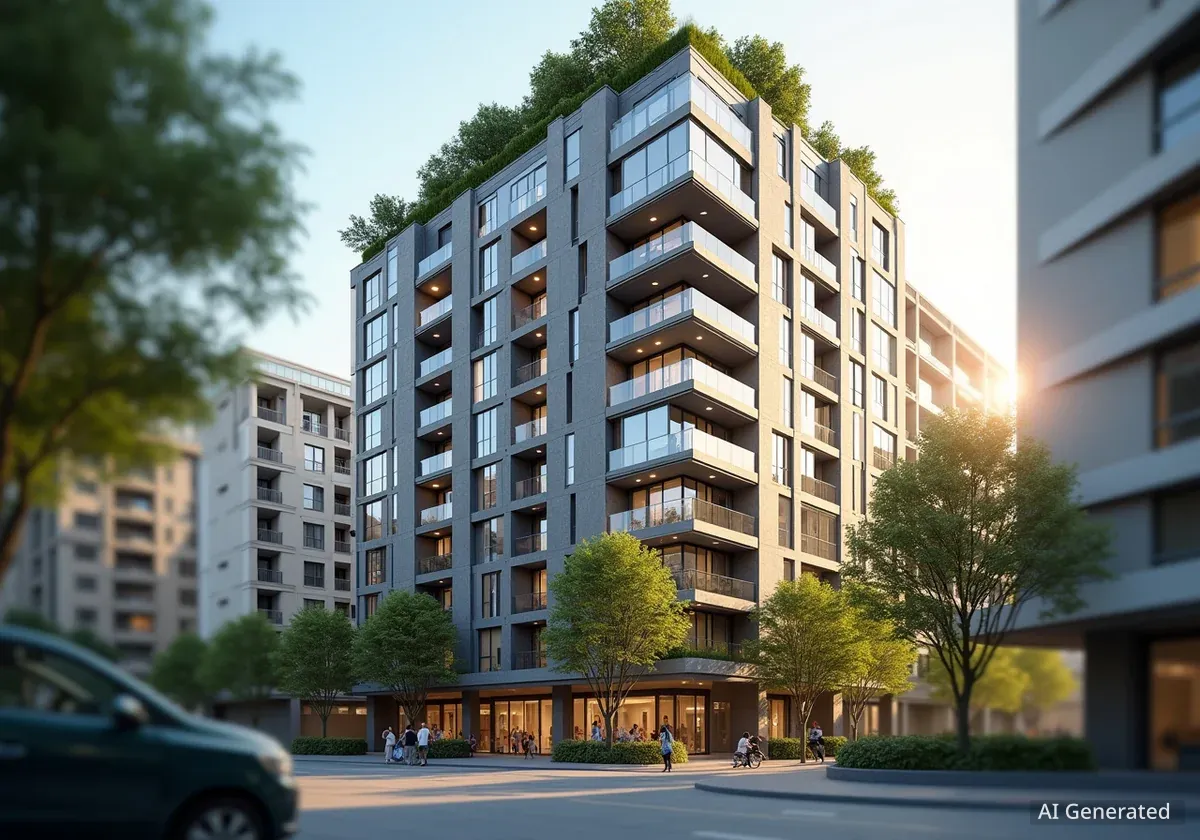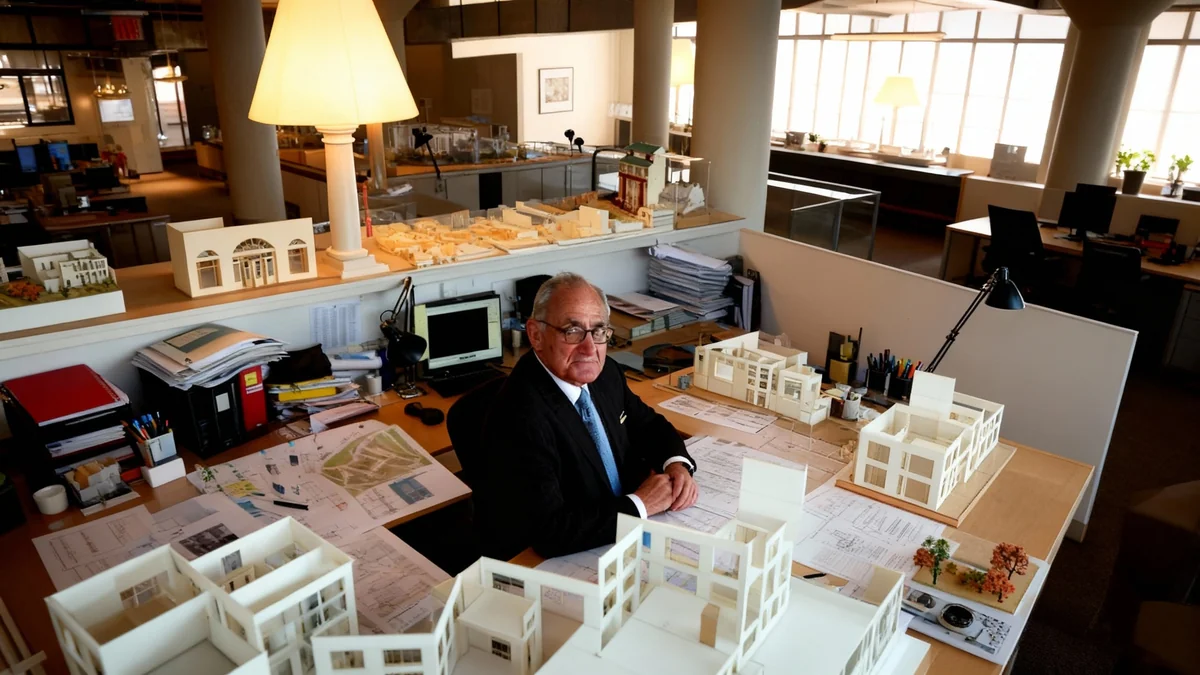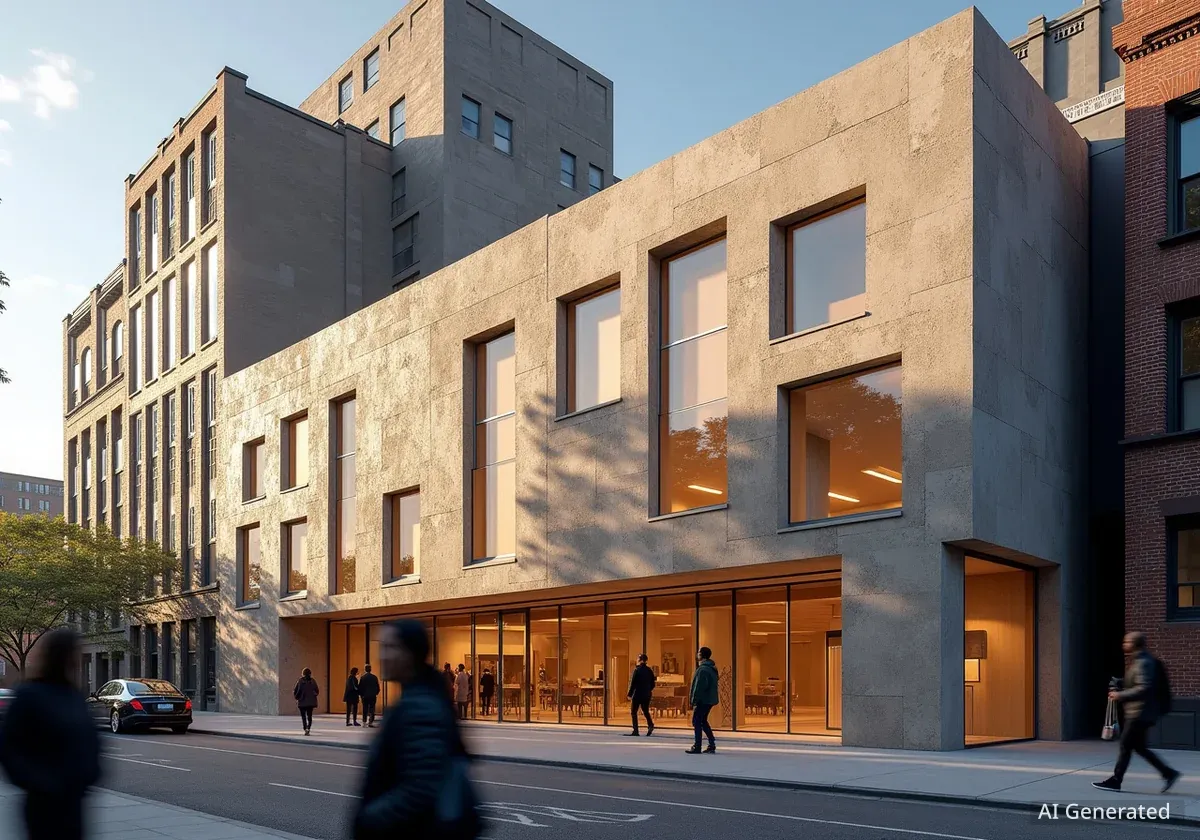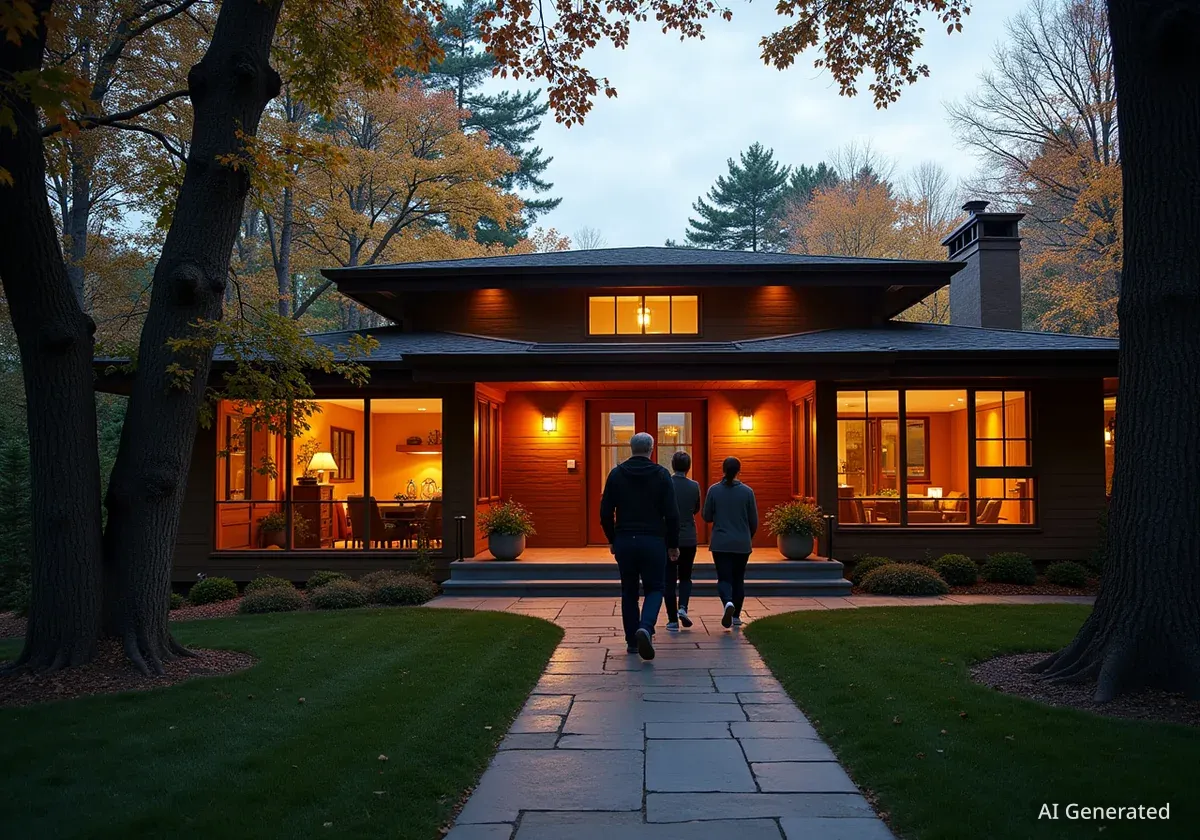Maison Le Sommet, a new residential project in Seoul's Gangnam district, challenges traditional high-rise development by focusing on human-scale urban living. This four-story building in Soerae Maeul integrates boutique residences with street-level civic spaces and a community rooftop park, aiming to foster stronger connections between residents and their urban environment.
Key Takeaways
- Maison Le Sommet is a four-story mixed-use building in Seoul's Gangnam district.
- It features twelve residential units, ground-floor civic spaces, and a rooftop park.
- The design emphasizes human-scale urbanism, contrasting with Seoul's dominant high-rise culture.
- Materials like stone, timber, and textured finishes create a warm, continuous interior.
- The project seeks to enhance community interaction and connection to the street.
A New Approach to City Housing
The design of Maison Le Sommet draws inspiration from urban planning theories that advocate for lower-rise residential buildings. Christopher Alexander, in his 1977 work A Pattern Language, argued that buildings taller than six stories can disconnect residents from street culture. He believed that urban vitality thrives on a human scale, a concept also championed by urban activist Jane Jacobs.
Jacobs promoted diverse, walkable neighborhoods where people live, work, and interact. Maison Le Sommet aims to embody these principles, offering an alternative to the towering apartment complexes common in Korean cities. It is located on a scenic hill in Soerae Maeul, an area known for its French cultural influences, tree-lined streets, and vibrant café scene.
Project Details at a Glance
- Location: Soerae Maeul, Gangnam District, Seoul, South Korea
- Architects: Chiasmus Partners
- Area: 726 m²
- Completion Year: 2024
- Stories: 4
- Residential Units: 12
Architecture That Connects to the Street
Maison Le Sommet stands at just four stories, designed to blend with the natural topography of the hillside. The building's rounded corner and soft balcony curves respond to the road's curvature at the hill's peak. This architectural design creates a smooth transition and engages with the city's rhythm.
The ground floor functions as a 'civic threshold,' intended for programs that serve both the building's residents and the wider Soerae Maeul community. Due to the sloping terrain, the lower ground floor also connects directly to the street, extending this public space across two levels. This area could host a café, a specialized retail store, or even a local clinic, serving as an integrated part of the neighborhood.
"The first floor is envisioned as a 'civic threshold'—a place open to programmes that complement both the architecture of Maison Le Sommet and the everyday life of Soerae Maeul." - Chiasmus Partners
The twelve residential units feature large windows that open to the green canopy of the street's mature trees. This design ensures that apartments do not merely overlook the city but become part of an active urban landscape, where life unfolds continuously.
The Vision of Christopher Alexander and Jane Jacobs
Christopher Alexander was an architect and theorist who argued for human-centered design, emphasizing patterns that contribute to livable environments. He suggested that buildings should not exceed six stories to maintain human connection to the street.
Jane Jacobs was an urban activist and writer known for her critiques of urban renewal policies. She advocated for mixed-use, dense, and walkable neighborhoods, believing that lively streets are crucial for community life and public safety.
A Community Sky Park for Residents
A significant feature of Maison Le Sommet is its community green roof park. This shared space sits atop the building, offering residents an elevated landscape for gathering and reflection. It is designed to deepen the relationship between private living and public life.
Residents can use this space for gardening, relaxation, or enjoying views of the neighborhood. This 'vertical commons' extends the walkable street experience upwards, providing a communal area where people can connect with nature and each other. It represents a commitment to collective urban identity.
This park is more than an amenity; it is a statement about fostering community within an urban setting. It allows residents to feel connected to the vibrant life on the street below while enjoying a peaceful, elevated retreat.
Seamless Design and Warm Materials
The interior design of Maison Le Sommet focuses on continuity. The architects aimed for a seamless flow from the street, into the building, and then into individual homes. This approach ensures that the rhythm, light, and texture of the outside environment are carried indoors, creating a fluid experience.
Materials were chosen for their visual calm and physical warmth. Stone and tile surfaces, warm timber flooring, and softly textured wall finishes are used throughout the private residences, corridors, and shared spaces. This consistent material palette reinforces a sense of unity across different areas of the complex.
Large openings connect interior spaces to the surrounding landscape, allowing natural light and views of greenery to enhance the living experience. Even indoors, residents feel a connection to nature's rhythms.
- Interior Materials: Stone, tile, warm timber, textured wall finishes
- Design Philosophy: Continuity from street to home
- Emphasis: Natural light, tactile experience, connection to nature
An Alternative for Urban Living
Maison Le Sommet presents a vision for urban living that moves away from the typical towering structures. It re-engages with core urban principles: appropriate scale, complexity, walkability, and social interaction. This approach echoes earlier Seoul neighborhoods known for their low-rise villas and townhouses, which valued street-facing entrances and soft boundaries between public and private domains.
The building opens outward to light, texture, and the calming presence of nature within the city. It blends individual and collective spaces, as well as private and public areas, into a cohesive urban fabric. This design fosters a sense of intimacy and reassurance for residents.
Surfaces in both wet and dry zones, such as bathrooms and kitchens, feature warm-toned finishes. Tactile built-in furniture and partitions in living areas further contribute to an environment of stillness and harmony. This is achieved through thoughtful design, not excessive ornamentation.
Maison Le Sommet is more than just a residential building. It proposes a more livable, inclusive, and connected urban future. It integrates dwelling, gathering, and exchange to form a lively tapestry of commercial, residential, and communal life.
The project highlights a growing trend in urban development to prioritize human experience and community building over sheer density and height. It serves as a model for how modern cities can evolve while preserving a sense of local identity and human connection.




